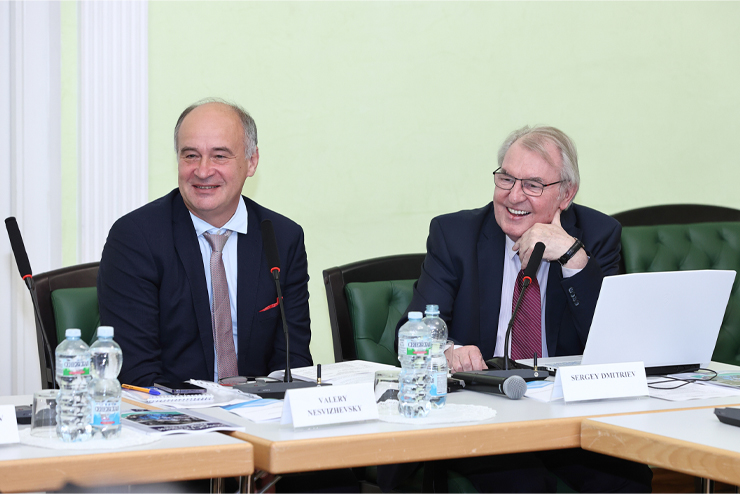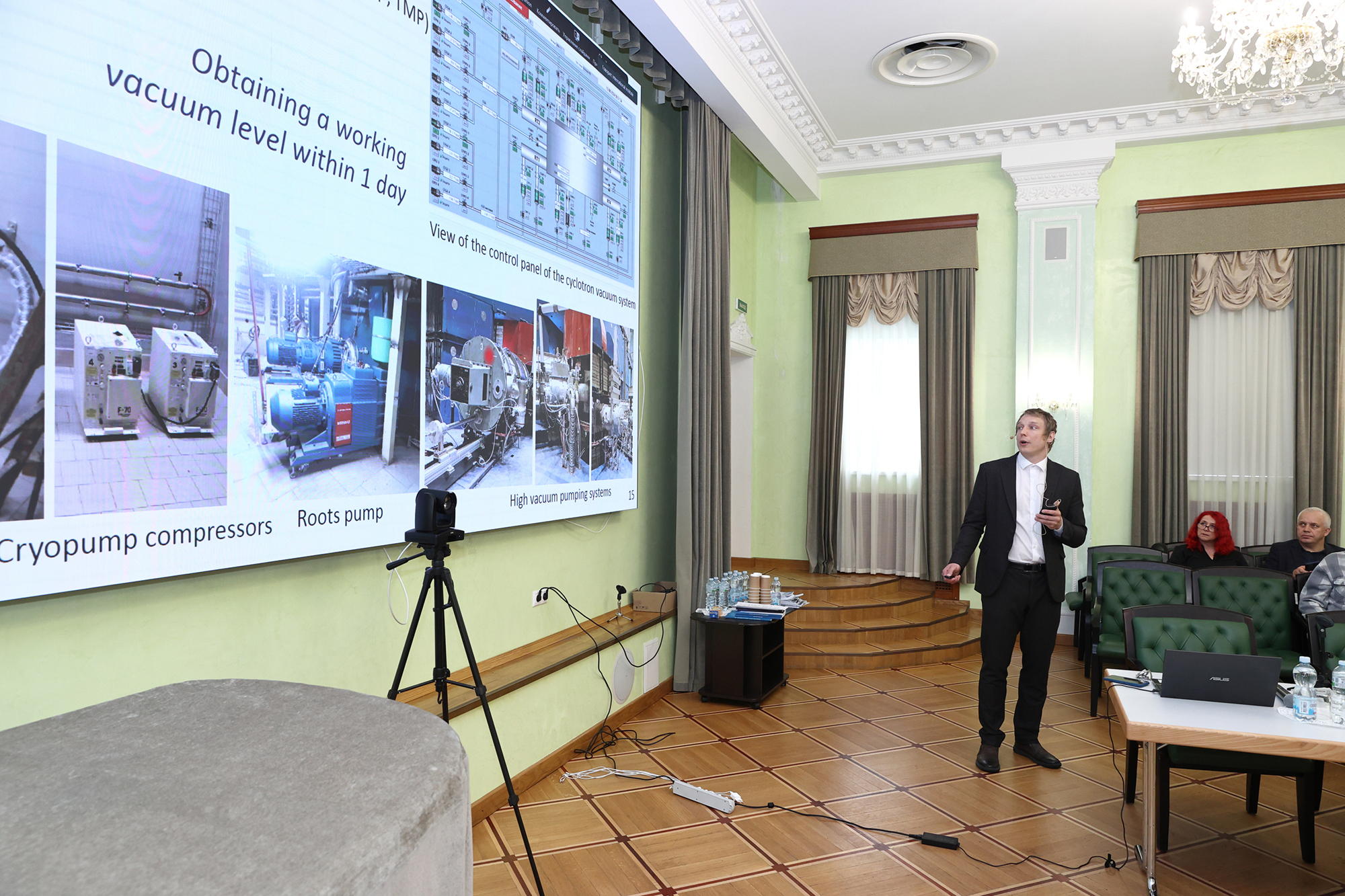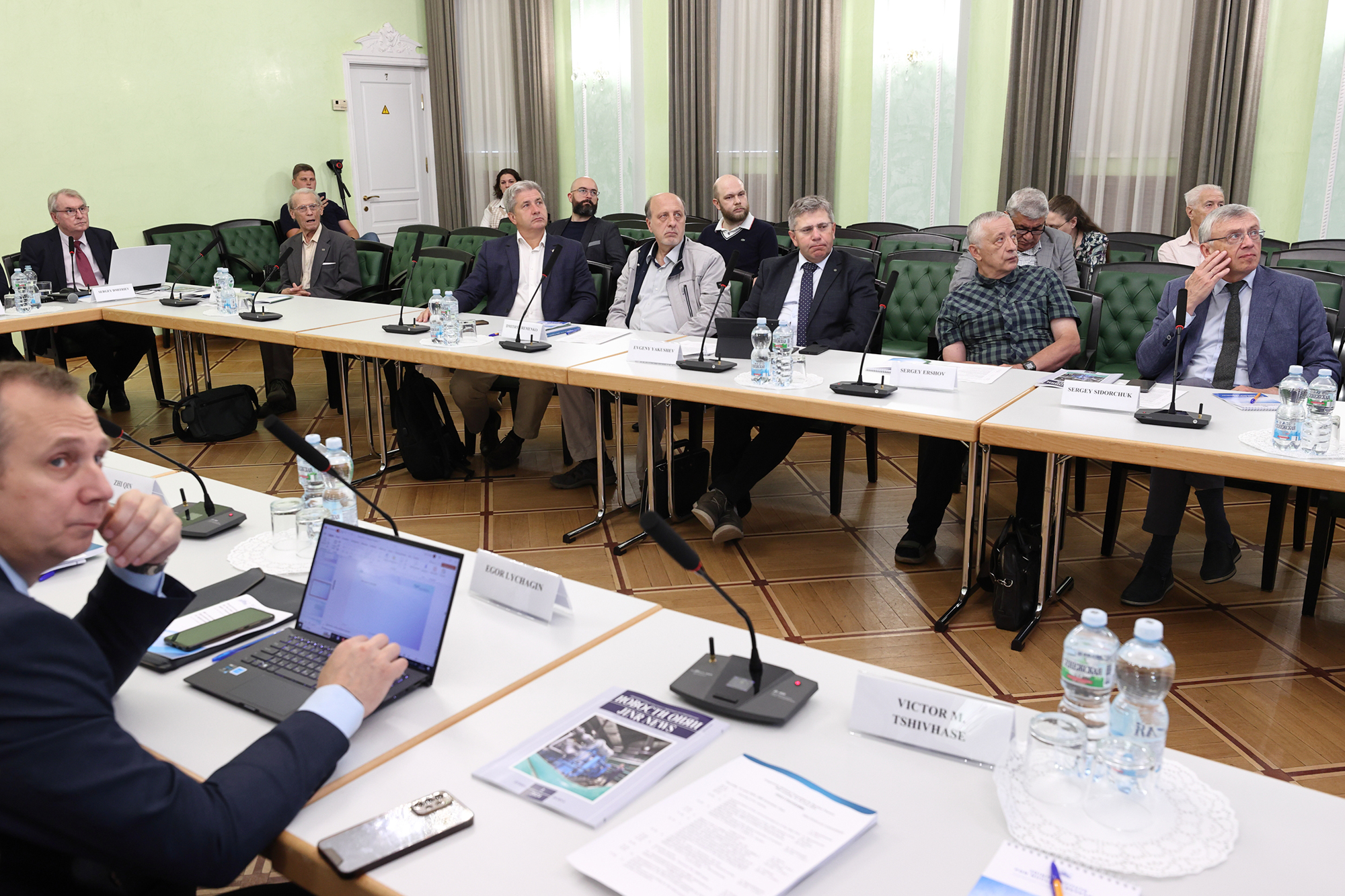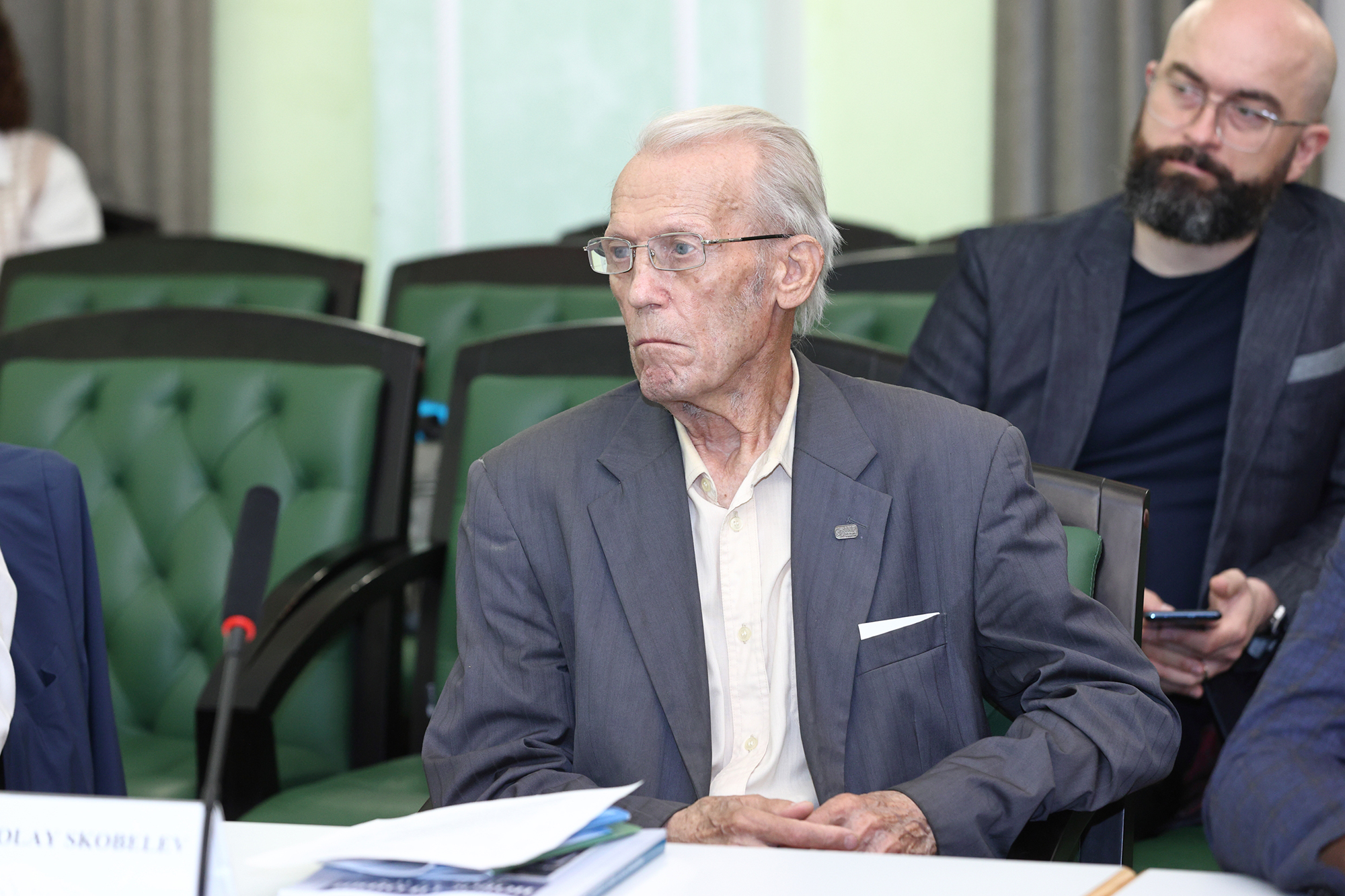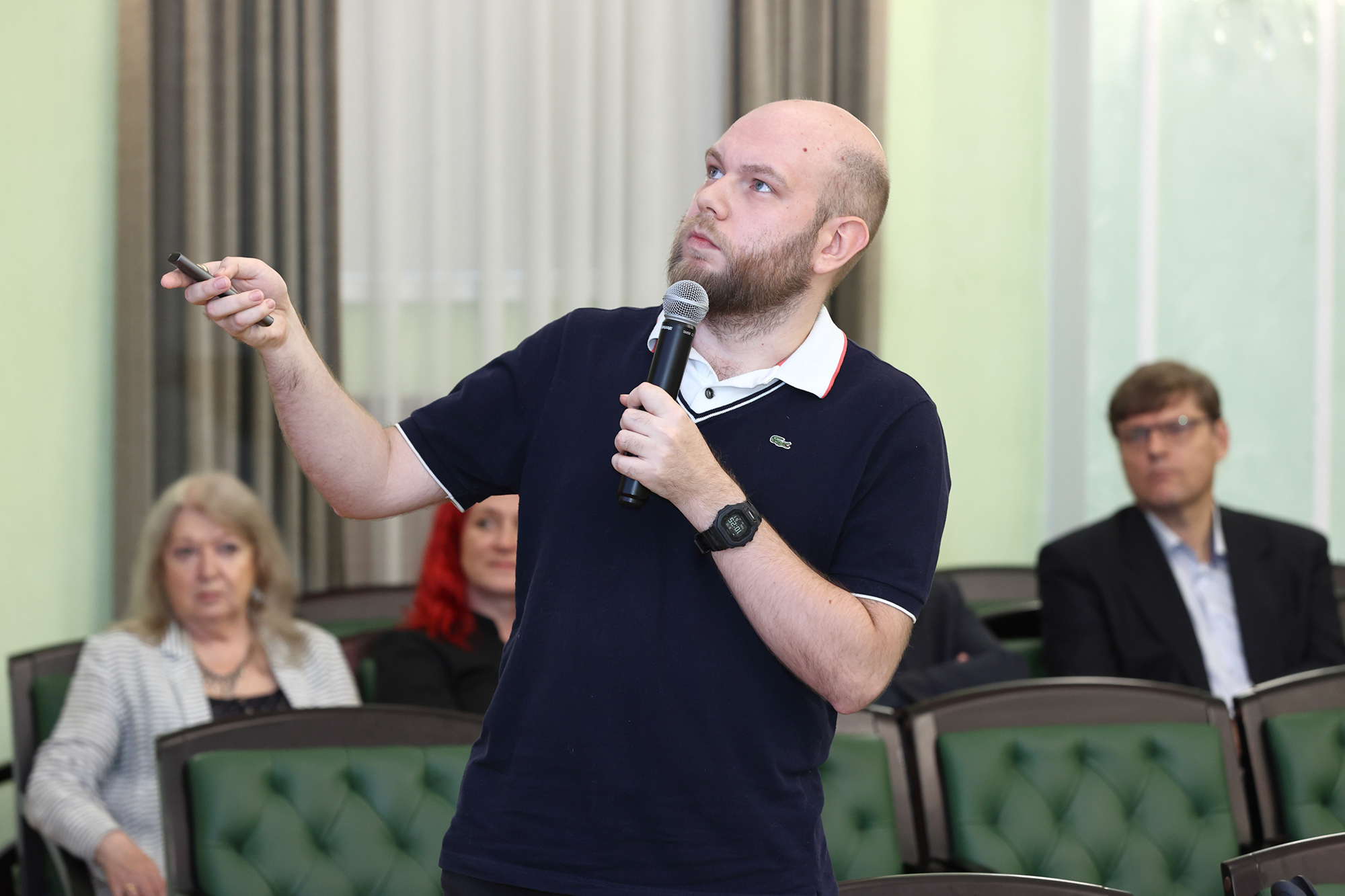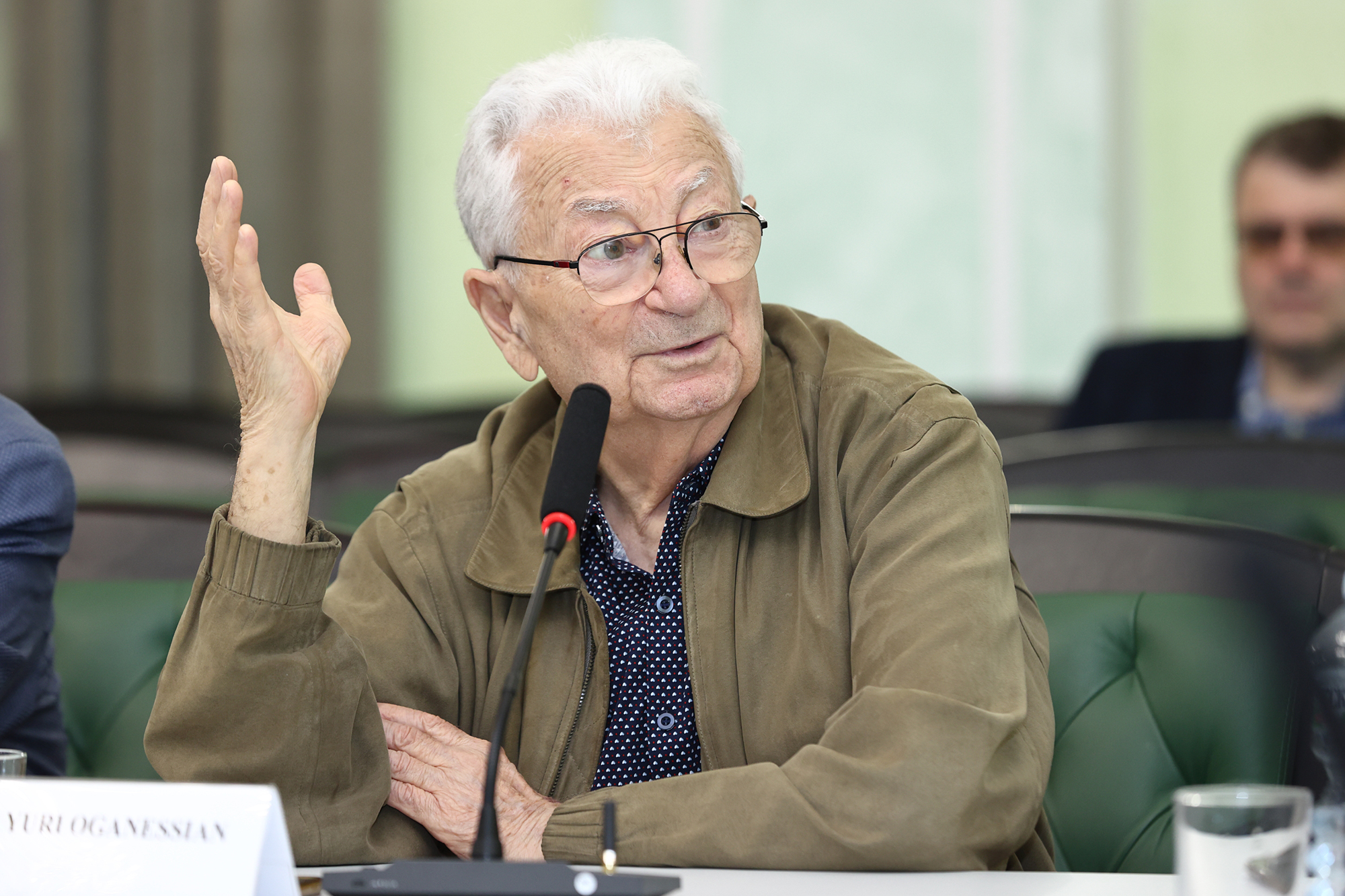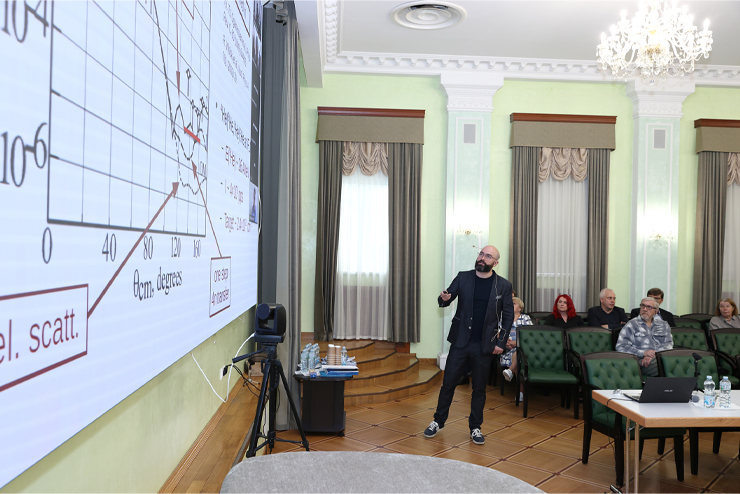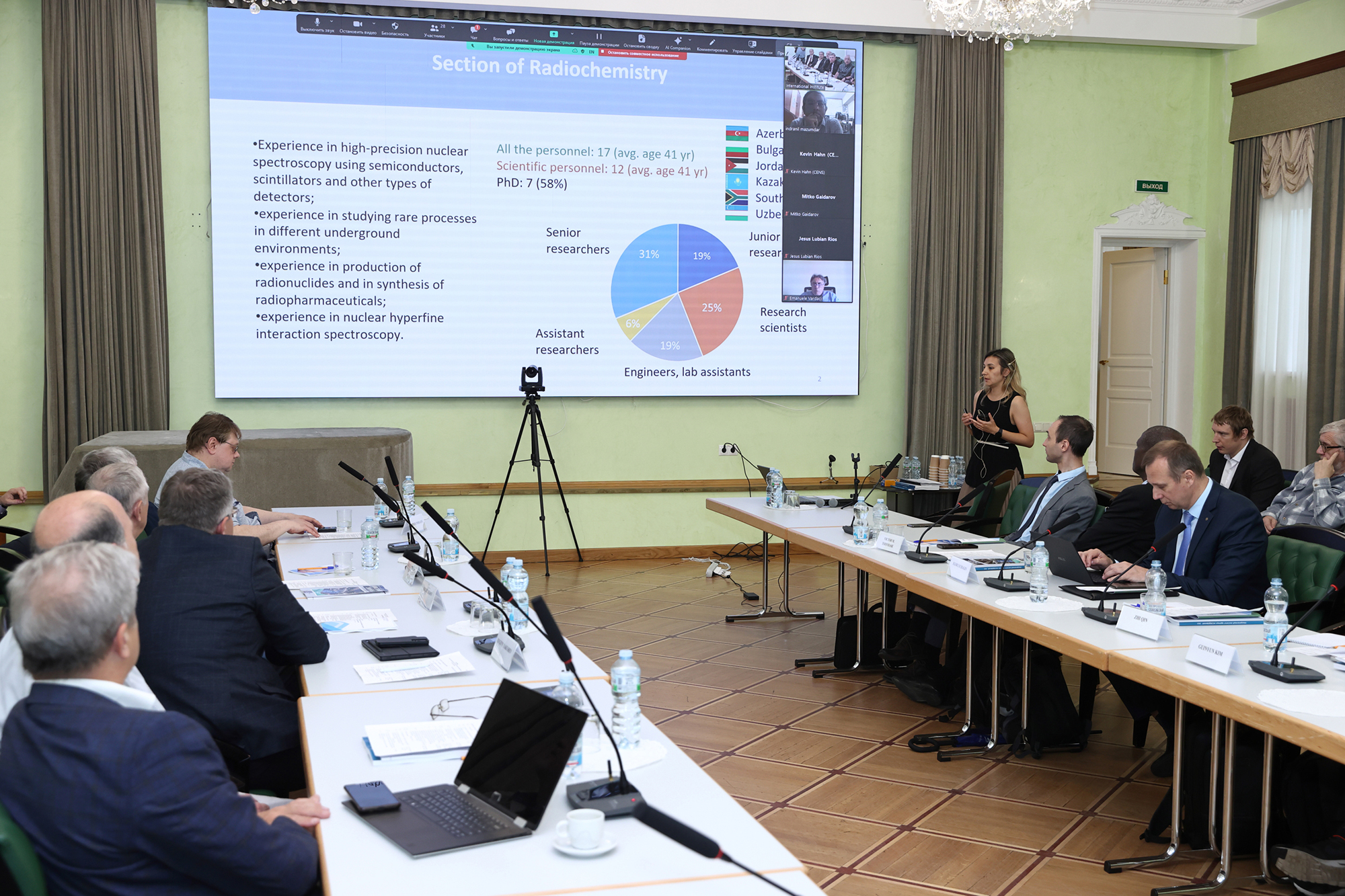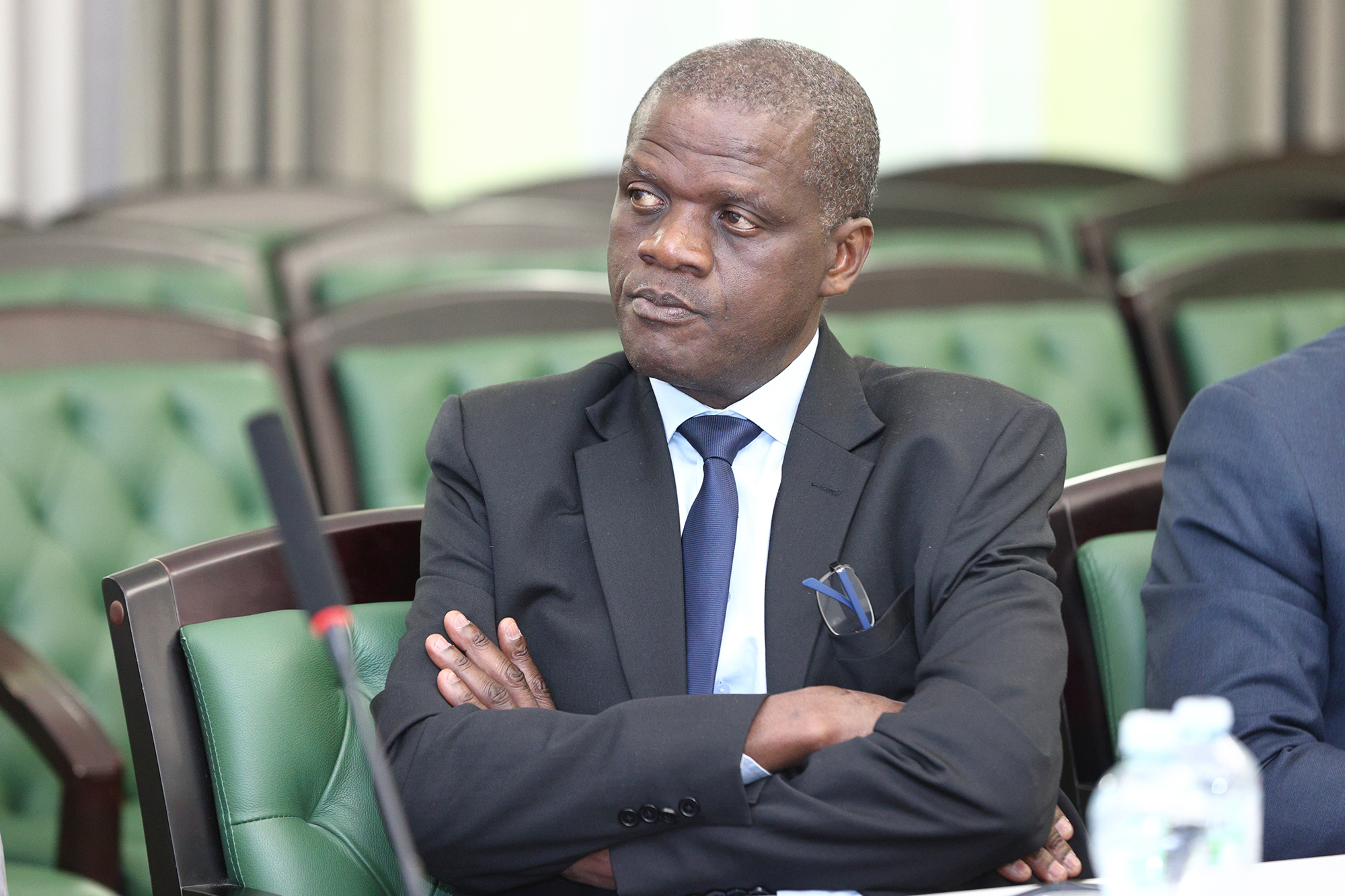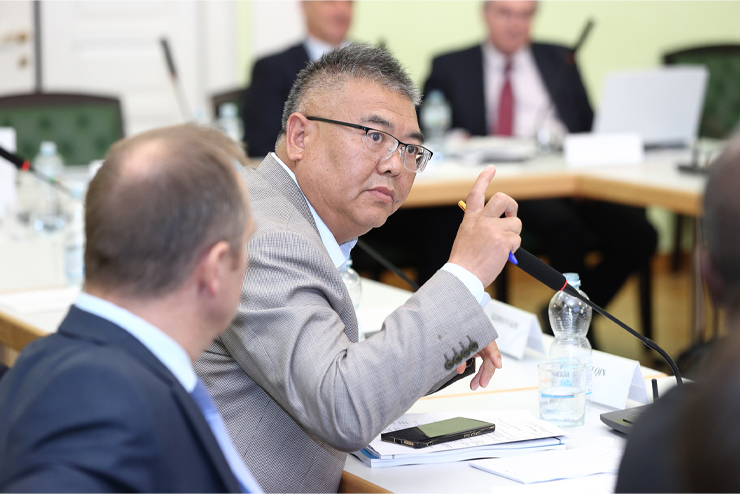Development of accelerator facilities discussed at meeting of PAC for Nuclear Physics
News, 17 June 2024
On 13-14 June, the 59th meeting of the Programme Advisory Committee for Nuclear Physics (PAC NP) took place at the Joint Institute for Nuclear Research. On the first day, the PAC members heard reports on the status and results of current research projects at FLNR, DLNP, LRB, and MLIT at JINR. In addition, the PAC programme included a competition of nuclear physics reports by young scientists.
PAC NP Chair Valery Nesvizhevsky presented an overview of the implementation of the previous meeting’s recommendations. The PAC members heard a report by JINR Vice-Director Sergey Dmitriev on the Resolution of the 135th session of the JINR Scientific Council (February 2024) and the decisions of the Committee of Plenipotentiaries of the Governments of the JINR Member States (March 2024).
When asked about the project of the new JINR scientific journal, Chief Scientific Secretary of the Institute Sergey Nedelko noted that it would cover a broad range of disciplines corresponding with the Institute’s research areas. With the significant recent changes in the global scientific publications landscape, JINR should assume a leading role in its formation.
A junior researcher at the Laboratory of Nuclear Reactions Nikita Kovrizhnykh made a presentataion on the Laboratory’s latest achievements in synthesising and studying the decay properties of isotopes of the superheavy elements Ds and Lv. He noted that a new isotope 288Lv was synthesised for the first time in the reaction of 54Cr with actinide target nuclei, with cross section of the 238U+54Cr reaction calculated to be around 70 fb. These results indicate a great potential for further investigation of superheavy nuclei with a low formation cross section.
In addition, the 232Th + 48Ca reaction was studied at four beam energies using the new DGFRS-2 Gas-Filled Recoil Separator installed in a channel of the DC-280 Cyclotron of the FLNR JINR Superheavy Element Factory. The data on the properties of nuclei in the 275,276Ds decay chains are of great importance for the identification of element 120 that could be synthesised in the 54Cr + 245Cm reaction.
Head of the FLNR JINR Scientific and Technological Accelerator Department Vasily Semin reported on the status of the U-400M Accelerator. As part of the development of the FLNR Accelerator Complex (DRIBS-III Project), the modernisation of the U-400M Facility began in July 2020. Its main goal was to increase the reliability and stability of the accelerator’s operations (with the main magnet coils, the accelerator vacuum system components, the control system, and the radiation monitoring system replaced to achieve this) and the intensity and energy of heavy-ion beams.
In early May 2024, after testing the main U-400M systems in autonomous mode, scientists began full-scale commissioning, during which the first ion beam was obtained. Upon completion of the full range of tests, the accelerator facility will be put into operation. The first experiments are scheduled for the second half of 2024.
An FLNR senior researcher Vratislav Chudoba presented the results of first experiments at the ACCULINNA-2 Fragment Separator. From 2018 to 2020, the first experiments were conducted at the new ACCULINNA-2 Facility of the U-400M Accelerator with highly intense 8He, 9Li, and 6He radioactive beams. The research by FLNR team provided new data on excitation energy spectra and decay schemes of the 5–7H, 7,9He, 8–10Li neutron-rich isotopes. After the U-400M Accelerator is recommissioned in the second half of 2024, studies of neutron, proton, and alpha transfer reactions are planned using the 6,8Не radioactive beams and the cryogenic 2Н gas target.
A researcher at the DLNP JINR Mass Separator Sector Vladimir Trofimov reported on the development of low-temperature detection systems for the study of coherent elastic scattering of neutrinos on atoms, nuclei, and electrons as part of SATURNE (Sarov tritium neutrino experiment). This nuclear physics project is aimed at studying rare events caused by weakly interacting particles in the low energy range.
DLNP JINR is participating in the experiment, developing a nuclear bolometer device for maintaining operating temperature of the helium and silicon detectors of the project with several “dry” cryostats of 3He/4He dilution. Such detectors will allow the researchers to measure coherent elastic scattering of neutrinos on helium and silicon atoms and nuclei and develop compact detectors for monitoring the fluxes of solar pp-neutrinos.
A researcher at the Laboratory of Nuclear Problems at JINR Ayagoz Baimukhanova reported on the prospects of radiochemical research at the Laboratory. One of the main research directions will be the production of pure radionuclides for synthesising radiopharmaceuticals (RPs) and manufacturing radionuclide sources for conventional nuclear spectrometry. Another important area is the production of low-background materials with ultra-low impurity content to search for rare processes and provide technical support for low-background experiments. In addition, the Laboratory’s team will analyse RPs, their precursors, and the radionuclide and chemical purity of the obtained drugs and low-background materials.
Two new basic facilities are planned to be put into operation at DLNP at JINR in the near future, the LINAC-200/800 Electron Accelerator and a spectrometry cluster designed to work in conjunction with it. In addition, it is planned to complete the repair and commissioning of new laboratory facilities, develop research in spectrometry, and produce radionuclide generators.
In the second part of the meeting, Deputy Director for Scientific Work at the Laboratory of Information Technologies at JINR Dmitri Podgainy presented a report “Govorun Supercomputer for JINR tasks“. Since its launch in 2018, the Govorun Computing Complex has proved to be effective in solving a wide range of JINR tasks in various fields of nuclear physics and related disciplines, including:
- calculation of the electronic structure of superheavy elements taking into account high-order relativistic corrections
- study of changes in the Periodic Law in the region of extremely heavy elements;
- research into the electronic structure of elements at the end of period 7 and the beginning of period 8;
- modelling the kinetics of excitation and relaxation of dielectrics irradiated with fast heavy ions;
- study of the structure of light exotic, heavy and superheavy nuclei, and reactions with them;
- modelling the radiation safety of heavy ion accelerators at FLNR at JINR using Monte Carlo simulation.
Director of the Laboratory of Radiation Biology at JINR Aleksander Bugay presented an overview of the Institute’s radiobiological research. Radiobiological experiments at JINR nuclear physics facilities aim at studying the mechanisms of ionising radiation with various physical properties at molecular, cellular, tissue, and organismal levels of biological organization. Special attention is paid to applied studies, particularly the development of novel methods for improving the effectiveness of beam and radionuclide therapy for cancer treatment and mechanisms of brain dysfunction caused by exposure to cosmic radiation.
The PAC NP members announced the winners of the nuclear physics reports competition among young scientists: Elena Kurakina (“Production of trivalent radionuclides for nuclear medicine and analysis via nuclear-spectrometric methods”), Dmitry Ponomarev (“Status of the Ricochet Experiment”), and Viktoriya Dik (“Real-time follow-up of multimessenger alerts at the Baikal-GVD Telescope“). The report by Viktoriya Dik will be presented at the 136th session of the Scientific Council in September 2024.
At the end of the meeting of the PAC NP members with the JINR Directorate on 14 June, the PAC recommendations were adopted, and proposals for the agenda of the next PAC meeting were considered.
